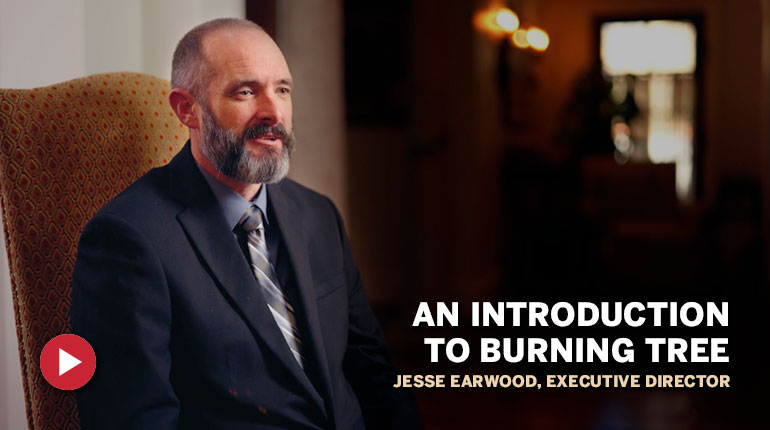Shea Barakatt LCSW, LCDC, EMDR Trained
Clinical Director, Burning Tree Recovery Ranch
I have been blessed for many years learning from clients, families, staff and my own personal experiences about the processes that allow an individual the best chances of living a substance-free life. I have always lived my life as an individual who will call it like it is, who is up front, who tells anyone who is inquiring about the no-holds-barred truth of a situation. The truth about this inquiry is that I will not be spouting out long clinical terms that make me look smart because no one will get that. But what I can share is my experience. I can share my experience on the miracles that have happened over long periods of time. I can share my experience working with clients for over a year, helping facilitate families heal, and developing new tools for communication and functionality. Yes, I may have lots of education, but I value my experiences and I love to share with others what I see as valuable.
There are so many treatment centers in the United States that discuss how their centers and modalities are the “best.” There are many great treatment centers out there that facilitate success for many addicts and alcoholics. What I will be discussing is the type of client that cannot stay substance-free but will continue to ride on the circuit of multiple treatment centers, only to seem to fall deeper in their disease, while in the meantime exhausting all financial means for themselves and their family. Their family begs for a solution to the chaos, destruction and the wreckage that occurs in the path of the client. I am referring to the client that belongs in Long Term-Treatment. The National Institute on Drug Abuse defines Long Term-Treatment as 6 months or more in residential care. Residential care is where long term treatment is given in a setting where the individual is living at the facility, receiving clinical services and supervised by staff twenty-four hours a day. I will discuss why this is so important for the chronic substance user.
Time- The concept of time is so important. This is the first factor that most clients and their family discount. Most individuals discuss how they must return to work, their family, and their life. The truth is, most of that is wrecked anyway, not to mention possible legal consequences? Most clients that enter Long Term-Treatment have destroyed most of what they deem to be important. This delusion about “saving time” must be smashed. Without recovery, most of what they say they value, and love will be gone anyway if the time is not put into all the processes and experiences necessary for the individual to recover. In Long-Term Treatment, the staff must have time to work with the whole family, not just the individual. A family will send their loved one to treatment to fix the “identified problem,” the substance abuse. Well, guess what, that is not the case. Addiction is a family disease and we must have the time to separate each individual and help them work on themselves first. We then bring everyone back together to work on the family unit. Each individual had been playing a role that was not working. With this disease, the staff needs time to identify, solidify and unify solutions for each individual to help promote change in the family. This is a process and the process can be messy, but if everyone is willing and gets into action, change is just around the corner.
Time is very important to identify and treat the individual. Any co-occurring disorder may continue to precipitate active use. Most individuals that enter treatment have some form of secondary diagnosis, such as depression, anxiety, bi-polar, PTSD, etc. This also is why time is so valuable. Most chronic substance users have had multiple diagnoses over the years, and most of those diagnoses have been made while the client was either still using substances or in a matter of days or weeks after abstinence. What we know is that it takes time for the brain to reach some form of homeostasis. There are multiple studies that show it can take anywhere from 9 months to a year for the brain of a recovering addict to reach a baseline. These numbers all depend on the age of the individual, time in active substance use and the substances used. We must first treat acute symptoms for stabilization and then continue to evaluate the client over time to see if symptoms go away after the mind, body and spirit begin to heal. This is vital for an accurate diagnosis and the identification of the correct treatment. The process of medication management, clinical interventions and repetition will rule out what was actually behaviors and symptoms of either withdrawal from substances or active substance use.
Time is important to identify trauma in clients that have had these identified experiences. Many therapists have started using the modality of EMDR (Eye Movement Desensitizing and Reprocessing). This modality is very effective when practiced over periods of months in a safe environment such as Long-Term Residential Treatment. EMDR can be harmful to an individual when dealing with complex trauma outside of a safe environment and/or when practiced in a short-term setting. I believe it is unethical to start this treatment with an individual who will be leaving treatment in two or three weeks. There are a lot of memories and there is central nervous system disruption that can occur with this process. Therefore, the client and the therapist will need a long period of time to safely open and close each target to reach healing and a cognition shift. This is done effectively with an informed and experienced staff that can monitor, evaluate and process over time. EMDR is used in outpatient settings with clients that are more emotionally stable and have tools to deal with life on life’s terms in between sessions.
The final elements that demonstrate the importance of time are discipline and repetition. Behaviors and thought processes do not change in 90 days. Clients must have a consistent environment that pushes them to practice the tools learned. A client can be informed and given information. But if the client is not forced to put the information into practice over a long period of time, there may be no change in behavior or shift in thinking. This is vital in recovery. The addicted individual must have new muscle memory to carry out a new way of being in their new life. Change is not comfortable and most change is resisted. I always say the first step to new behavior is being “comfortable” with being “uncomfortable.” When this is acknowledged, new behaviors, solutions, and thinking can be initiated. And all of this takes time.





